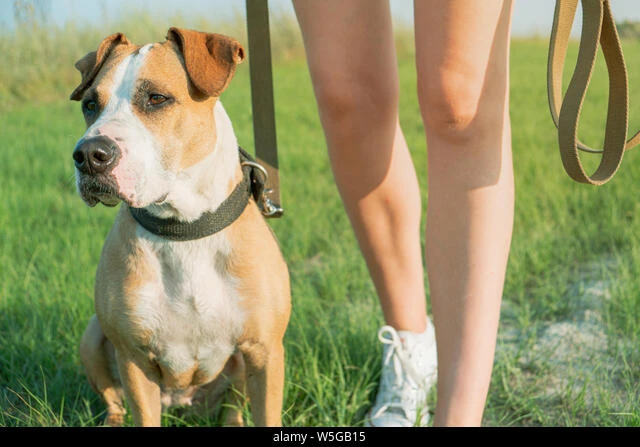How To Fix Your Pitbulls Bad-Behavior

Pit Bulls, celebrated for their intelligence and fidelity, can be exceptional companions. However, they may manifest certain behavioral issues. Such behaviors can stem from various factors, including breed-specific traits, training methods, and environmental influences.
1. Aggression in Pit Bulls: An Unjustified Stereotype?
Contrary to pervasive belief, Pit Bulls are not inherently aggressive. Their reputation primarily stems from their historical use as fighting dogs and the media's portrayal. Aggression in Pit Bulls, like any breed, can manifest due to fear, social triggers, protective instincts, defensiveness, territoriality, possessiveness, predatory instincts, pain, or self-directed aggression. These behaviors might involve barking, growling, teeth-baring, snapping, lunging, chasing, or biting.
Preventing and Handling Aggression in Pit Bulls
Early socialization and consistent training are key to curbing aggression in Pit Bulls. The objective is to expose the dog to diverse environments, people, and animals, reducing potential anxiety and fear. If your Pit Bull continues to display aggressive behaviors despite proper training, seek professional advice. Aggression can also stem from health issues, and veterinarians or professional behaviorists can suggest appropriate interventions.
2. Excessive Barking in Pit Bulls: Noise or Nuisance?
While Pit Bulls are not typically excessively vocal, their barks can be quite loud. Excessive barking may indicate inadequate socialization, fear, anxiety, perceived threats, or expressions of excitement and playfulness.
Reducing Excessive Barking in Pit Bulls
Managing excessive barking involves identifying the triggers. Once these are recognized, techniques such as desensitization and counterconditioning can be applied. Avoid using devices like anti-bark collars that do not address the root cause of the problem.
3. Destructive Chewing in Pit Bulls: A Cause for Concern?
Puppies often chew when teething to alleviate discomfort. If this chewing becomes destructive, it might indicate boredom or anxiety.
Addressing Destructive Chewing in Pit Bulls
Supplying chew toys can divert your Pit Bull's attention from your belongings. Ensuring your Pit Bull gets adequate physical and mental stimulation is also vital. If destructive chewing continues, seeking advice from a professional trainer or behaviorist would be beneficial.
4. Jumping Up on People: An Excitable Greeting or a Problem?
Jumping up on people is common in many dogs, including Pit Bulls. It is often a way to greet or seek attention. However, this behavior can be disconcerting for some people.
Preventing Your Pit Bull from Jumping Up on People
You can train your Pit Bull to express excitement in a more acceptable manner, such as sitting or lying down. Positive reinforcement techniques, where the dog is rewarded for demonstrating the desired behavior, can be effective.
5. Pit Bull Puppy Play Biting/Mouthing: Playful or Problematic?
Pit Bull puppies, like many other breeds, tend to engage in play biting or mouthing. It's important to distinguish between playful mouthing and aggressive behavior.
Curbing Play Biting in Pit Bull Puppies
To manage play biting, teach bite inhibition from an early age. If a puppy bites too hard during play, stop the game. This interruption teaches the puppy that gentle play continues, but painful play stops.
6. Separation Anxiety in Pit Bulls: A Cry for Companionship?
Separation anxiety is common in many dog breeds, including Pit Bulls. It can lead to excessive barking, destructive behavior, or other signs of distress when left alone.
Managing Separation Anxiety in Pit Bulls
Strategies for managing separation anxiety include creating a soothing environment, providing mentally stimulating toys, and gradually acclimatizing the dog to being alone. If these strategies are ineffective, consider seeking help from a professional behaviorist or veterinarian.
7. Resource Guarding in Pit Bulls: Protective Instinct or Problem?
Resource guarding refers to defensive behaviors a dog may exhibit when protecting food, toys, or territory. This behavior can stem from fear or anxiety and may escalate to aggression if not addressed.
Preventing Resource Guarding in Pit Bulls
To prevent resource guarding, establish trust and make your Pit Bull feel secure. Regularly changing feeding locations and toys can help reduce the development of possessive behaviors.
In conclusion, each Pit Bull is unique, and while this guide offers general advice, you should tailor your approach to your dog's specific needs and circumstances. Regular veterinary check-ups and professional behavior consultations can be beneficial in maintaining your Pit Bull's physical and behavioral health. Understanding and addressing your Pit Bull's behavior can significantly enhance your bond with your furry friend, promoting a harmonious living environment.